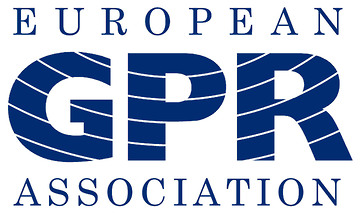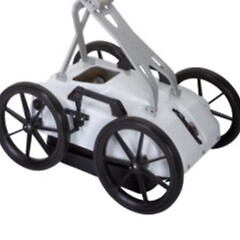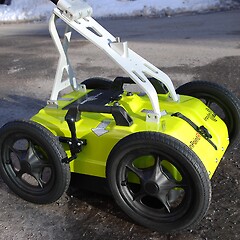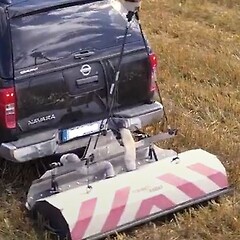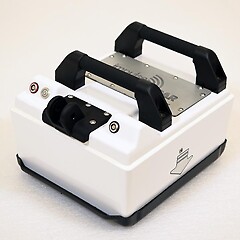Ground Penetrating Radar (GPR)
Ground Penetrating Radar (GPR) systems transmit pulses of Electromagnetic energy into the ground or into a structure. The pulses of energy are in the form of waves which reside in the radio bandwidth (25MHz to 10GHz). These devices record the amplitude and travel time of waves which have been reflected back to the surface.
Ground Penetrating Radar is a powerful tool for identifying buried objects. As with all remote sensing techniques it has some limitations which need to be understood. The technique is capable of identifying cables, PVC pipes, ceramic pipes, buried structures, concrete reinforcing and voids as long as there is a significant contrast between the material properties of the object and the surrounding material.
There is a trade-off with all GPR antenna between what size target can be resolved and the depth the transmitted wave will propagate into the ground before the signal is significantly attenuated. Lower frequency antenna should propagate signal further into the ground before natural attenuation reduces the wave amplitude below the detection threshold of the GPR receiver circuitry. However higher frequency antenna can resolve smaller targets closer to the ground surface. The resolution and depth of prospection are governed by the wavelength of the transmitted pulse, which in turn is governed by the velocity the wave is travelling, which is determined by the electrical permittivity of the material the wave is travelling through. Therefore the resolution and depth of prospection are very much dependent on the ground conditions.
Out of all the geophysical methods GPR systems have seen the most significant development since the turn of the century. The development of ever fast analogue to digital converters, for the telecoms industry, coupled with advances in computing have permitted GPR manufacturers to produce sophisticated systems with easy to use user interfaces.
As with all systems which radiate Electromagnetic signals GPR systems have to meet an emissions standard to be legal to use in many countries around the world. European Commission directives set the standards manufacturers have to abide by in order to sell their systems within the European market, however the use of the systems is generally overseen by a national regulatory body. In the UK a 3 year license can be obtained from Ofcom. Each country will have slightly different rules over the use of ground penetration radar, for further information please refer to EuroGPR.

